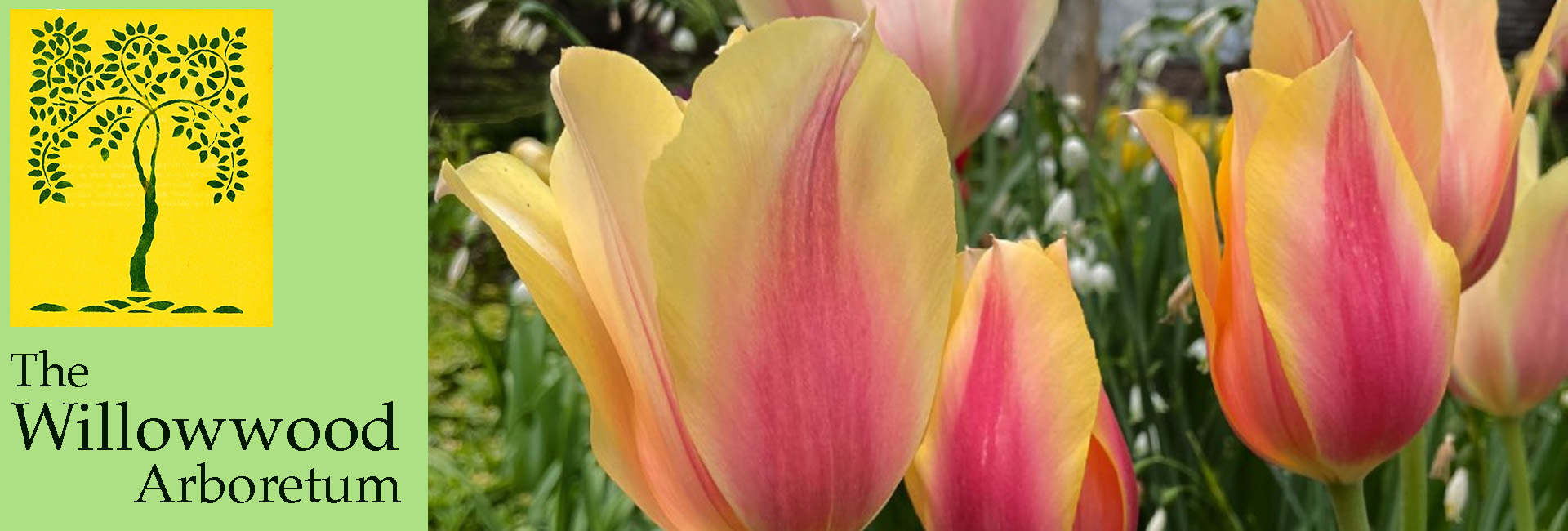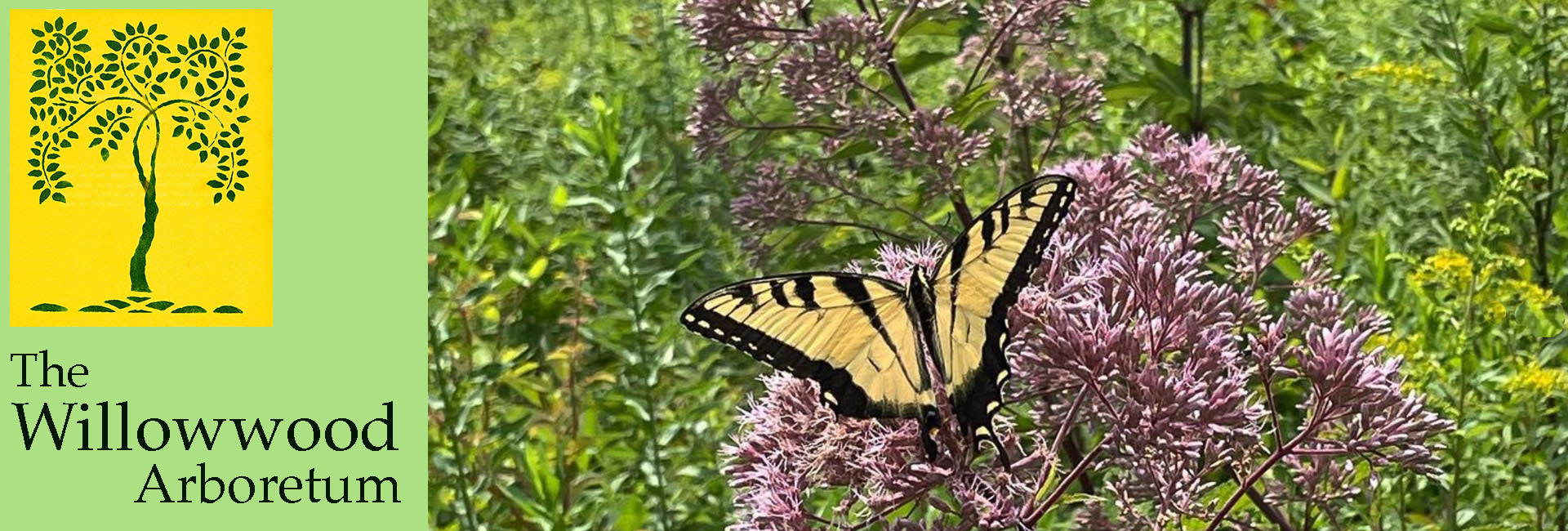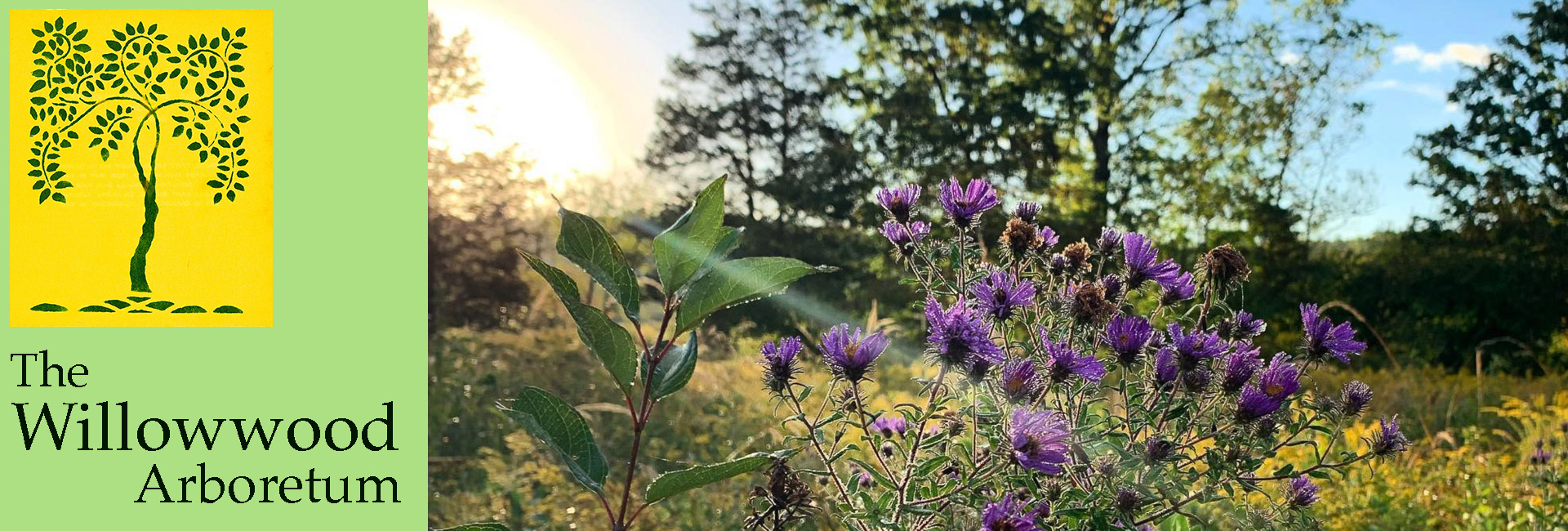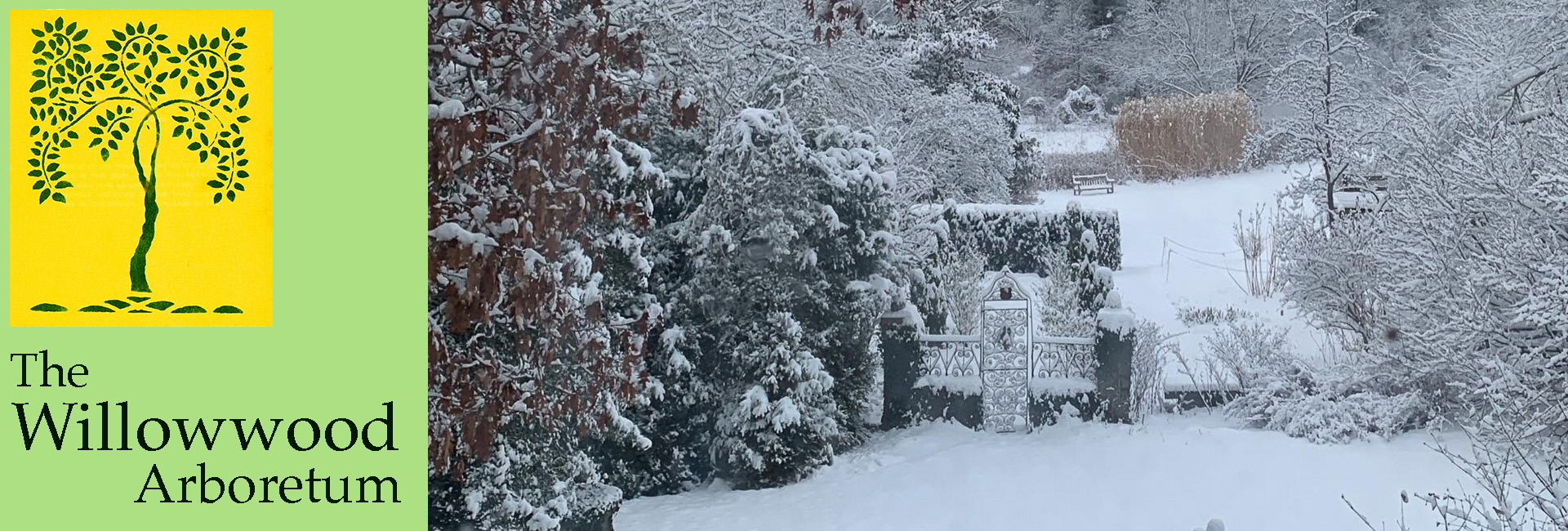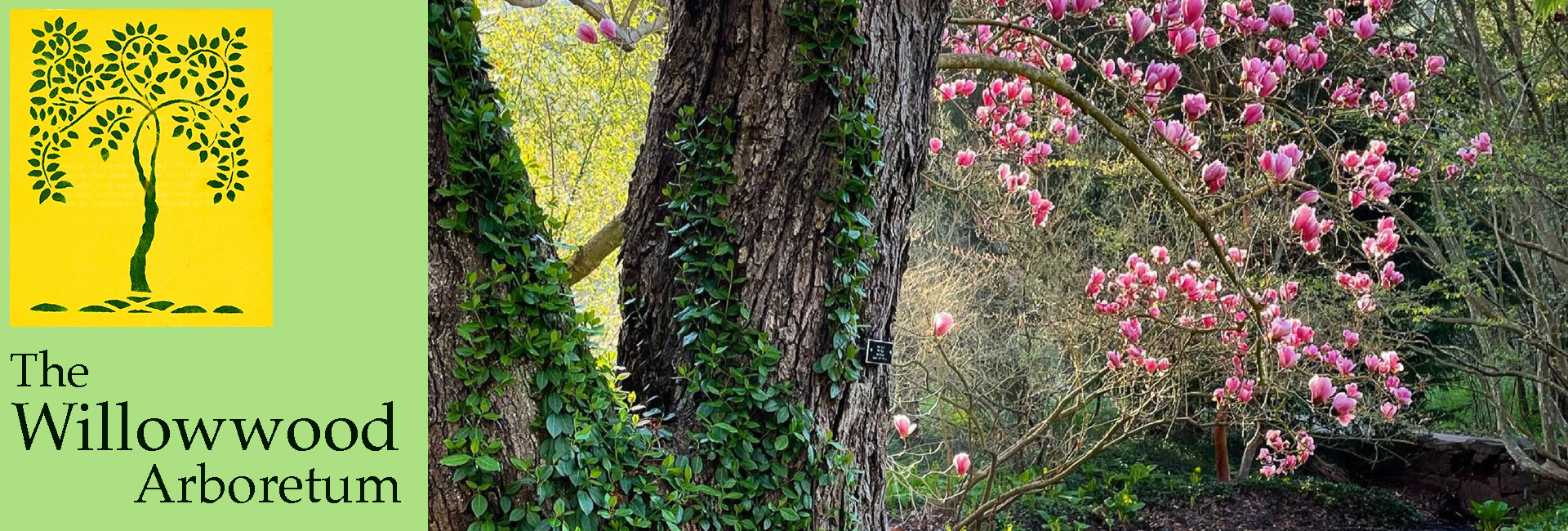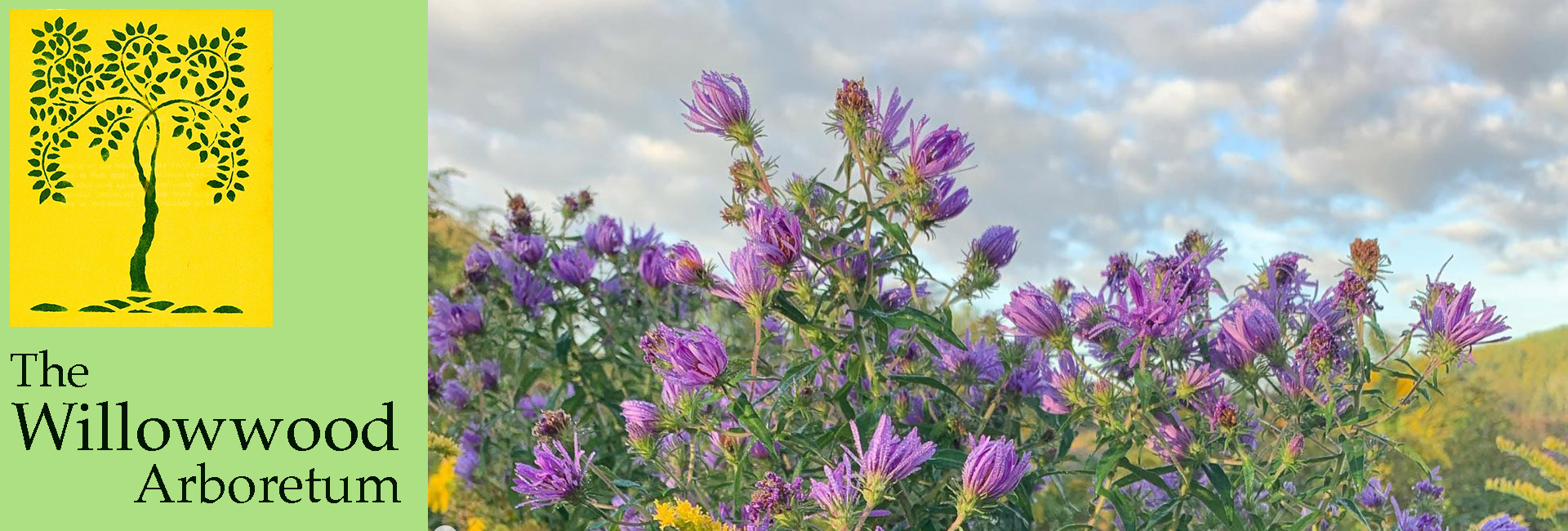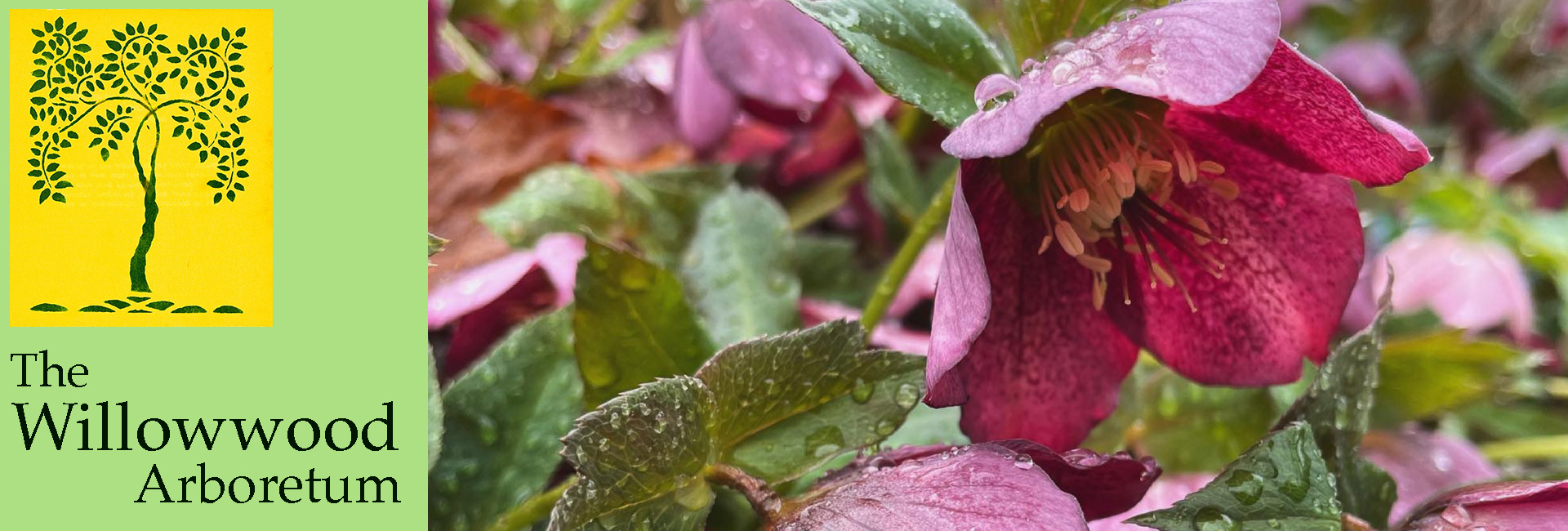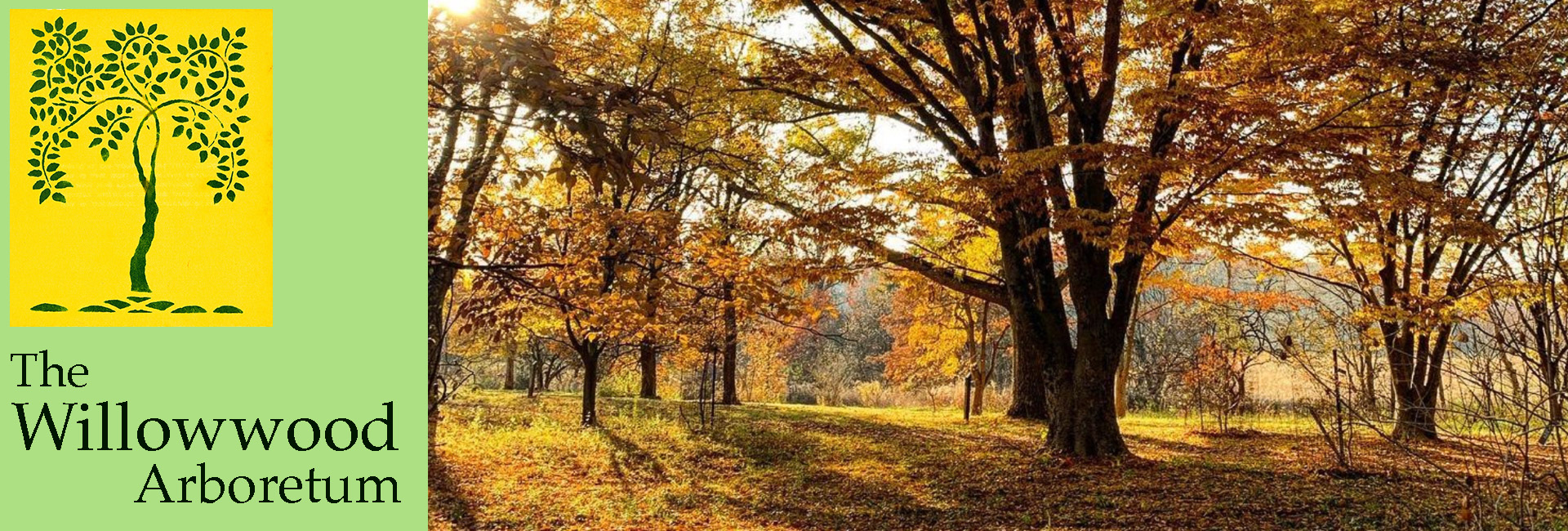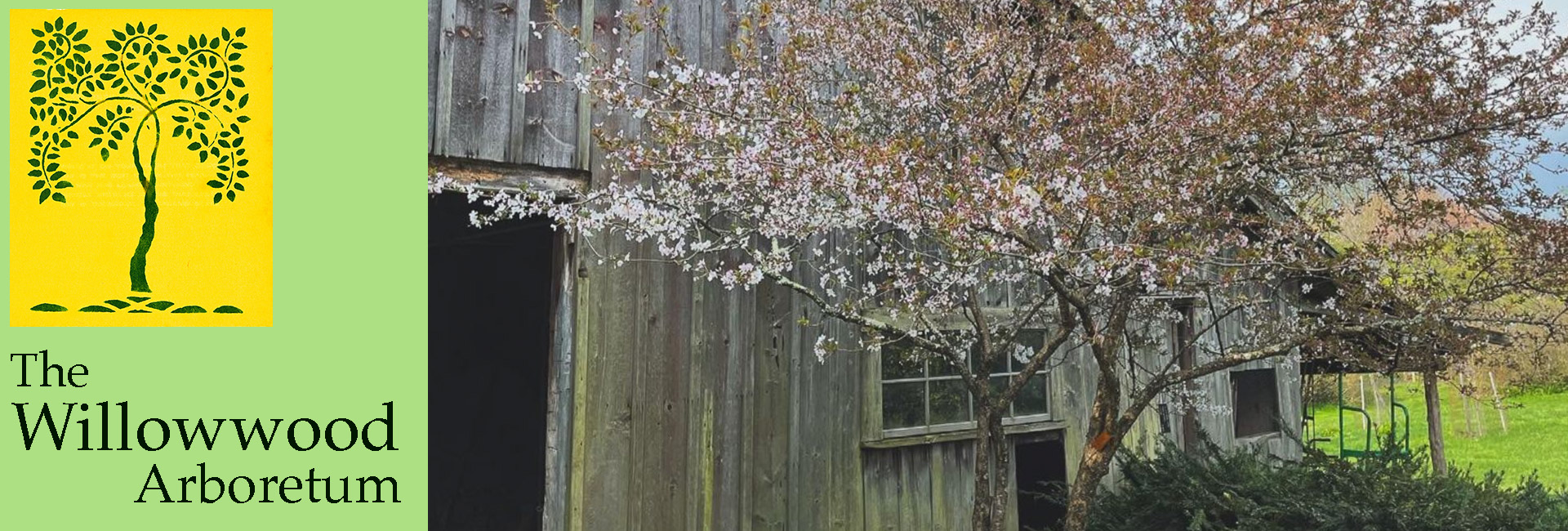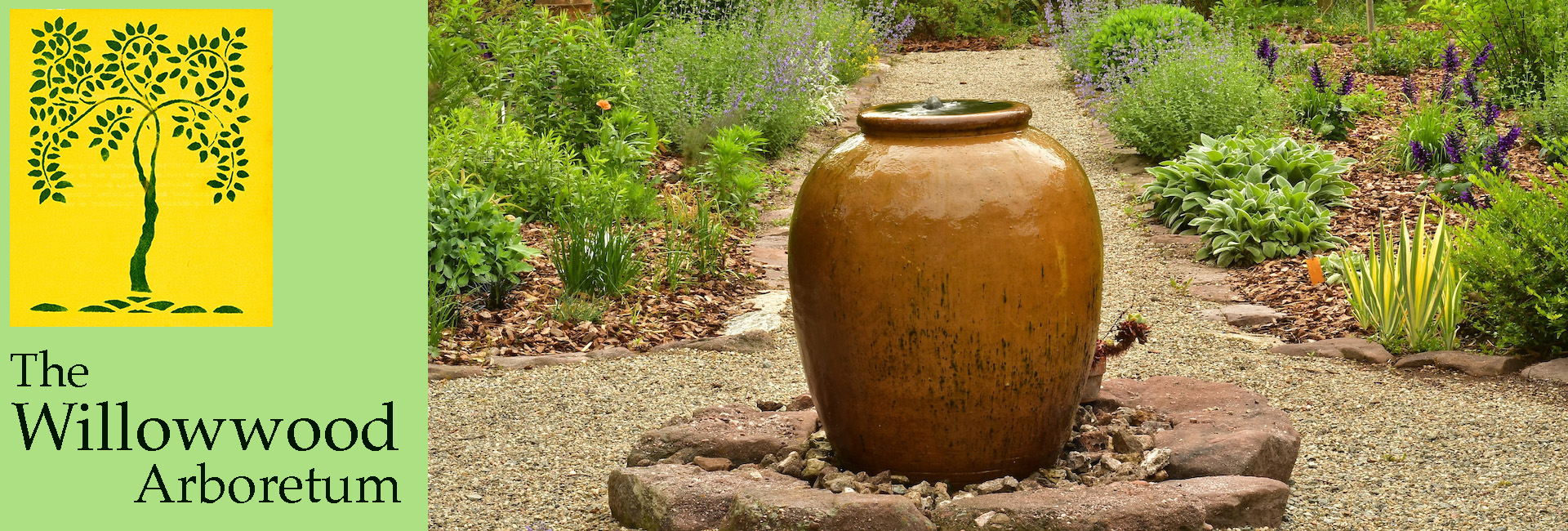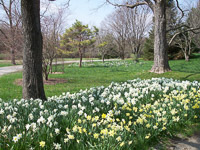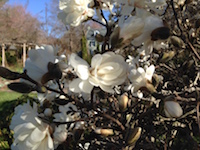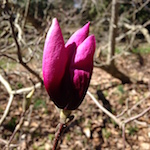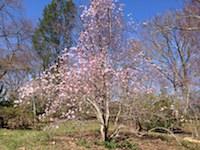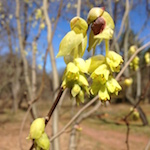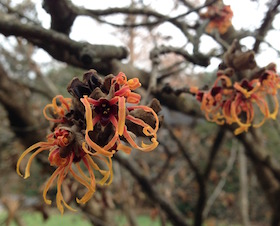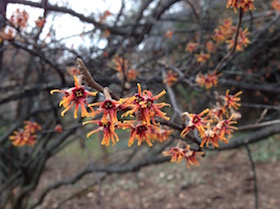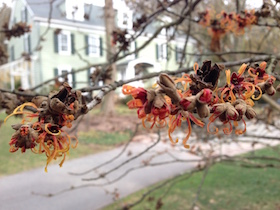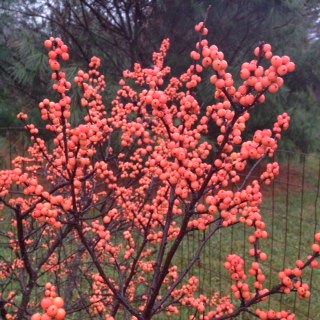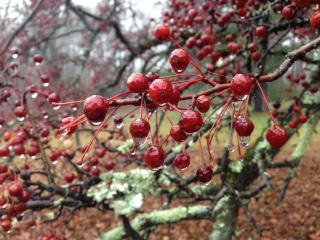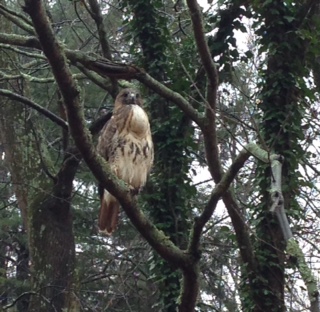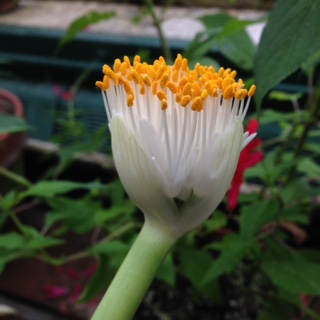Lots of daffodils still in bloom but Magnolias and Cherry trees have started blooming this week at Willowwood, and are putting on an elegant display in shades of pink, white and cream.
As you drive through the entrance gates, look for Magnolia x loebneri ‘Willowwood’ immediately on the right, with its densely petaled white flowers.
At the far end of the Cottage Garden, Magnolia kobus var. stellata ‘Royal Star’ is looking appropriately regal, and has a particularly well balanced form.
Other good places to spot magnolias in bloom are along the Woodwalk and in the Orchard. Some of the best specimens in the Orchard can be seen by walking through the gate leading out of the Roserie: look for Magnolia ‘Betty’ immediately in front of you. This is just starting to flower, and the lower surface of its petals, now visible, are an intense magenta, and almost black at the base. Magnolia x loebneri ‘Leonard Messel’, with its lovely pyramidal form and lighter pink flowers, is a short walk further ahead.
Some of the other woody plants flowering now include several species of Corylopsis, Winter Hazel, which have lovey, pendent inflorescences in shades of creamy yellow. Look for these along the sides of the drive past the Tubbs house, towards the Bee Meadow and paths to the Brocade Hillside.
We hope you’ll come out to enjoy the plants and mild weather, and keep returning often over the next several months to watch spring unfold!
Click on an image to enlarge.
Reported by Sara Perzley
Plant Records Specialist & Propagator
